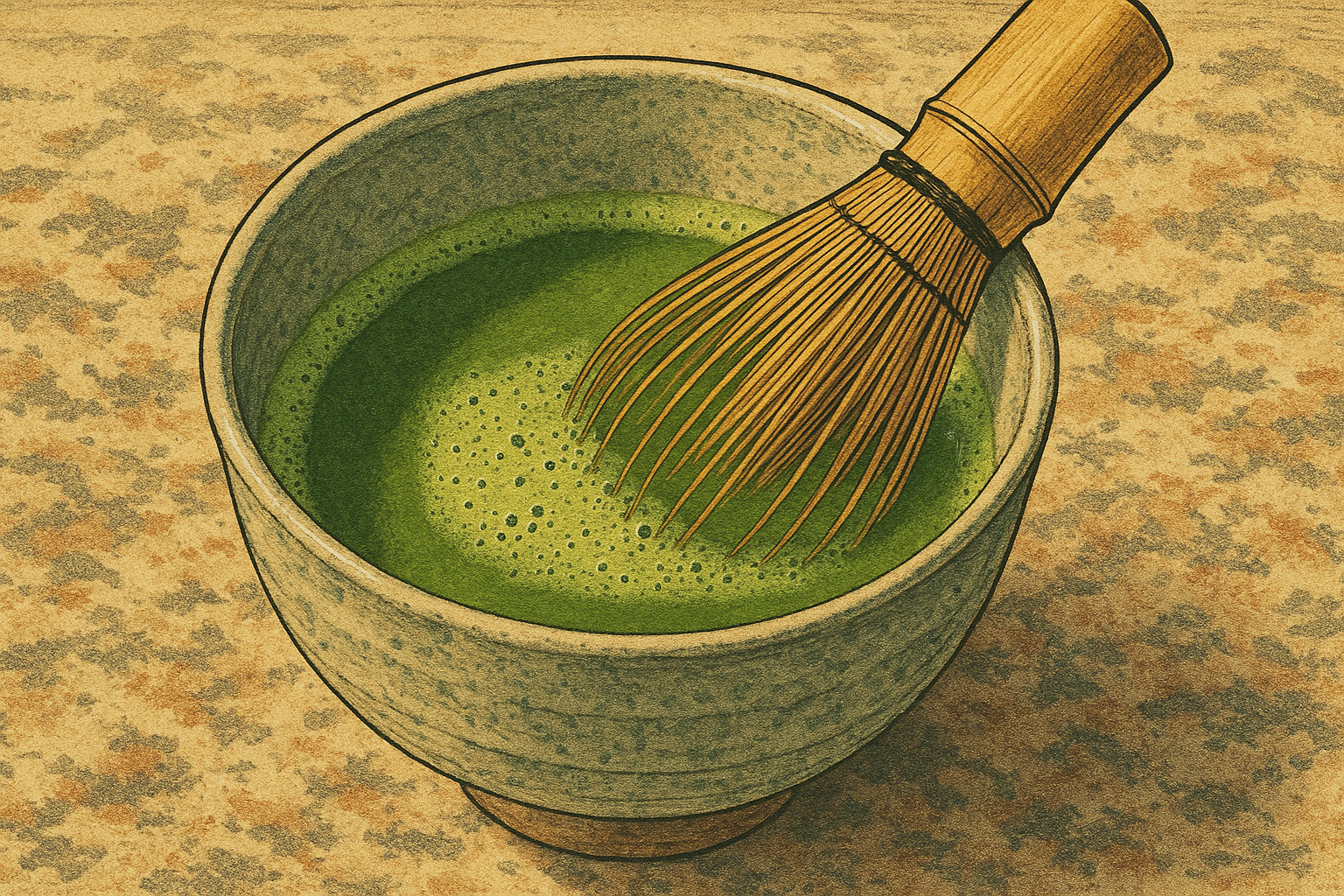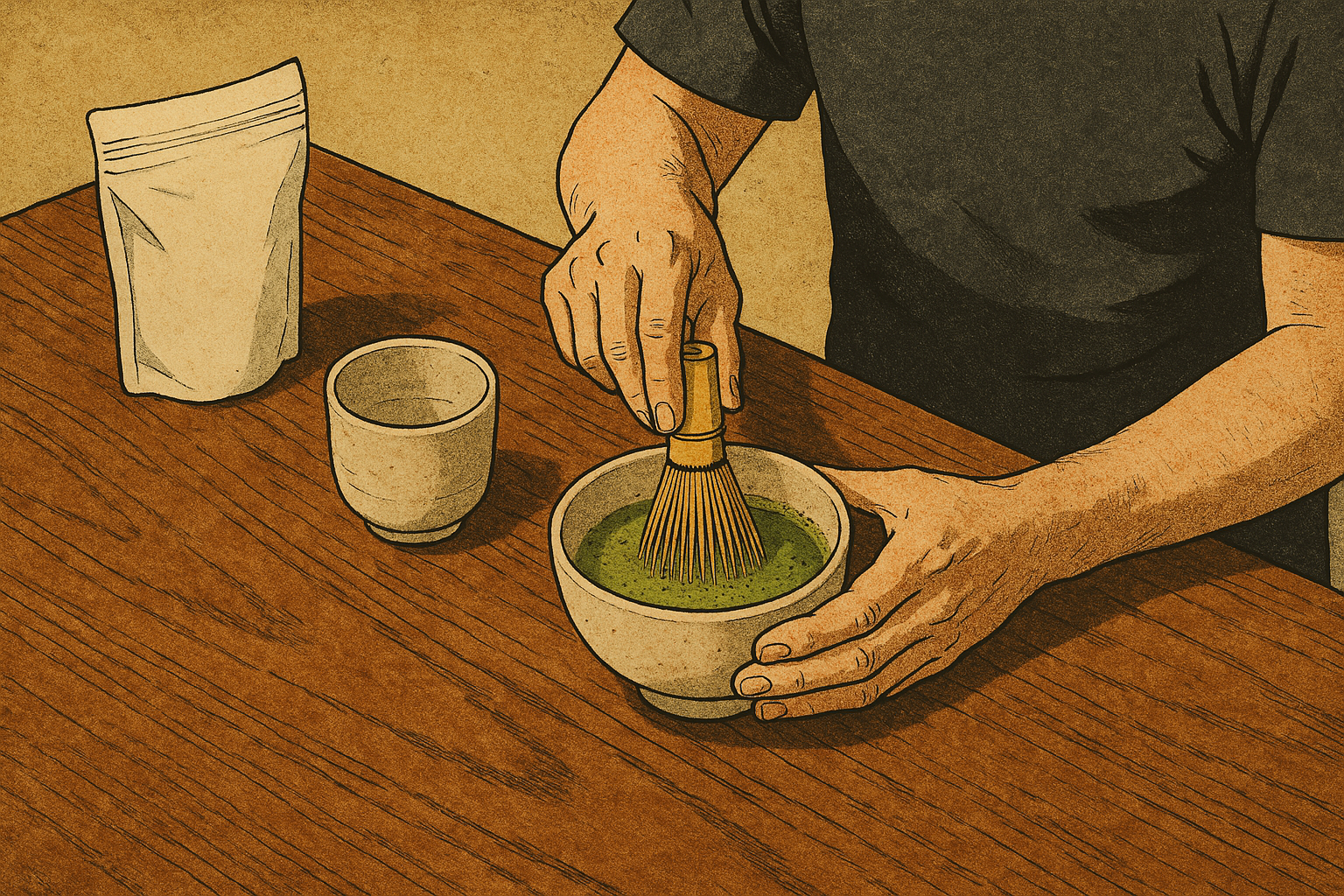Matcha can be tricky to work with because it’s delicate, sensitive to temperature and quick to lose its flavor if handled incorrectly. Leave it exposed to air or sunlight for too long and it oxidizes. Use boiling water and your tea turns bitter. Skip the bamboo whisk and you’ll end up with clumps instead of a smooth froth.
The good news? Every one of these problems is easy to fix with a few small changes. Understanding how temperature, technique and timing affect your matcha can completely transform its taste and texture.
Here are the five most common matcha mistakes and how to avoid them for a smoother and more flavorful experience.
Using the Right Water Temperature
If your matcha tastes overly bitter, the culprit is likely water temperature. High-quality matcha should have a smooth, balanced flavor with gentle bitterness and a rich umami finish. However, using boiling water can scorch the delicate tea powder, resulting in a harsh taste.
The ideal water temperature for matcha is around 176°F (80°C). Some blends, like ceremonial or fragrant varieties, may taste even better when prepared with slightly cooler water around 140°F (60°C). The key is to experiment within this range to find the sweet spot for your specific matcha blend.
For precision, a variable-temperature kettle works best. But if you don’t have one, simply boil water and let it cool for about five minutes before whisking. In Japan, a yuzamashi, an open-top cooling bowl, is traditionally used to lower water temperature quickly. You can replicate this by transferring boiled water to another bowl and letting it rest.
There’s no strict lower limit for matcha preparation either. For cold brew matcha, mix the powder directly into cold water. When making a matcha latte, adjust based on preference or use hot water for a cozy latte or cold water for a refreshing iced version.
Finding the Right Matcha-to-Water Ratio
Using too much or too little matcha can easily throw off the flavor balance. Since matcha is made from finely ground whole tea leaves, a small amount goes a long way. About 1 teaspoon (2 grams) of matcha is perfect for 6 ounces (180 ml) of water — any less and the flavor can become overly strong or bitter.
If you’re new to matcha, start with lighter blends and gradually increase the amount as you develop your taste. For traditional styles like usucha (thin tea) or koicha (thick tea), it’s best to follow precise ratios for consistent flavor and texture.
Beginners can also explore milder recipes or add milk and natural sweetness for a smooth, balanced start. As you become more familiar with its earthy, umami-rich taste, try experimenting with thicker blends or chilled drinks like iced matcha for a refreshing twist.
For high-quality blends suited for every style from light daily matcha to ceremonial-grade, visit ChaLab and find the perfect matcha for your taste.
Choosing the Right Matcha for Your Needs
Not all matcha is created equal. The type of matcha you use should match its purpose whether you’re drinking it pure, blending it into a latte or using it in baking.
For tea preparation, choose ceremonial grade matcha. It’s made from the youngest tea leaves which offers a smooth and naturally sweet taste with minimal bitterness. On the other hand, culinary grade matcha is better for recipes like desserts, smoothies or baked goods, where other ingredients balance its stronger flavor.
If you love lattes, a less expensive ceremonial grade is ideal for a gentler and requires less sugar or syrup for balance. For an excellent example, try Matsu No Midori Ceremonial Matcha, a Japanese blend known for its refined taste and vibrant green color.
Mixing Matcha the Right Way
Matcha doesn’t dissolve in water but it suspends in it. That’s why proper mixing is essential for a smooth and creamy froth. The best way to achieve this is with a bamboo whisk (chasen), a traditional tool used in Japanese tea ceremonies for centuries. It evenly blends the powder and creates the signature foam of a perfectly prepared usucha (thin matcha tea).
For beginners or those looking to refine their matcha ritual, the ChaLab Essentials Kit – Matsu No Midori includes everything you need from premium matcha, a bamboo whisk and other tools to help you whisk your matcha to perfection.
If you don’t have a bamboo whisk, there are simple alternatives. An electric frother works just as well for quick preparation, while the bottle-shake method which combines matcha and water in a sealed bottle and shaking vigorously is perfect for busy mornings or matcha on the go.
Storing Matcha the Right Way
Proper storage is key to keeping your matcha vibrant and flavorful. Once opened, store your matcha in the refrigerator to protect it from light, heat and moisture. This helps preserve its freshness, color and aroma for up to six months.
For the best taste, try to finish your matcha within two months of opening. If you keep several tins at once, label each with the date it was opened.



